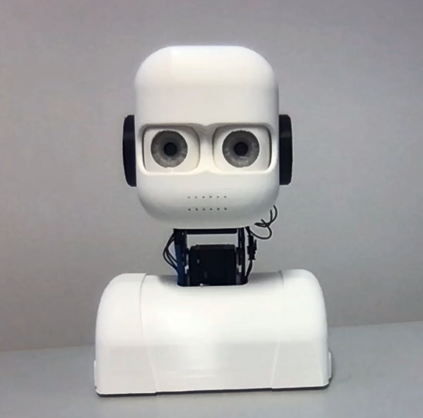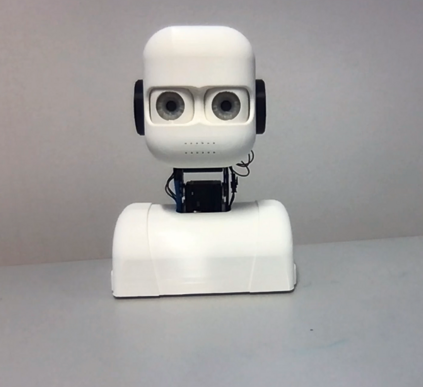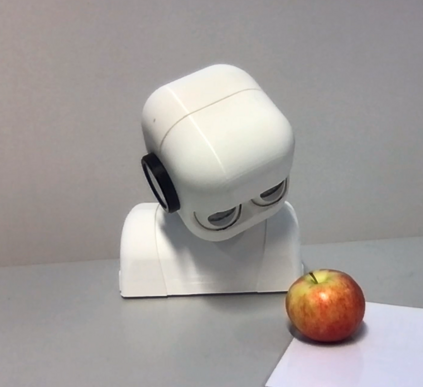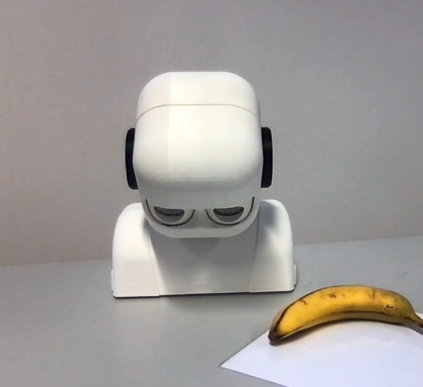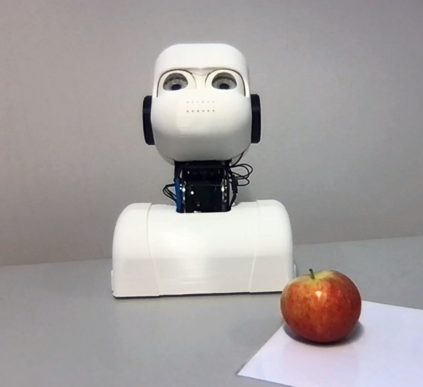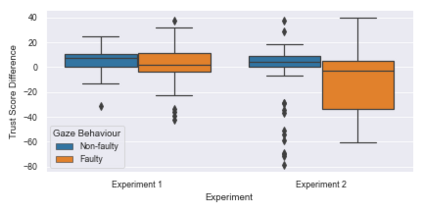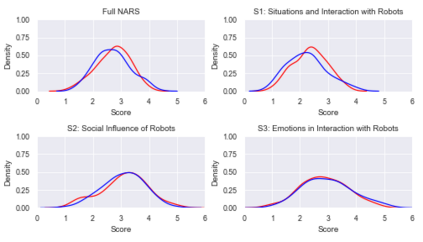We present data from two online human-robot interaction experiments where 227 participants viewed videos of a humanoid robot exhibiting faulty or non-faulty behaviours while either remaining mute or speaking. The participants were asked to evaluate their perception of the robot's trustworthiness, as well as its likeability, animacy, and perceived intelligence. The results show that, while a non-faulty robot achieves the highest trust, an apparently faulty robot that can speak manages to almost completely mitigate the loss of trust that is otherwise seen with faulty behaviour. We theorize that this mitigation is correlated with the increase in perceived intelligence that is also seen when speech is present.
翻译:我们展示了两个人类机器人在线互动实验的数据,在这两个实验中,227名参与者观看了一个人类机器人的视频,该机器人在保持沉默或说话时表现出有缺陷或无过失的行为。我们要求参与者评估他们对机器人的可信赖性的认识,以及它的可喜性、活力和感知智慧。 结果显示,虽然一个无过失的机器人获得了最高程度的信任,但一个显然有缺陷的机器人能够说话,几乎完全减轻了人们所见的错误行为造成的信任损失。 我们推测,这种缓解与在演讲时所见觉察到的智能的增加相关。

